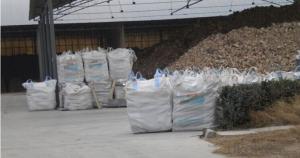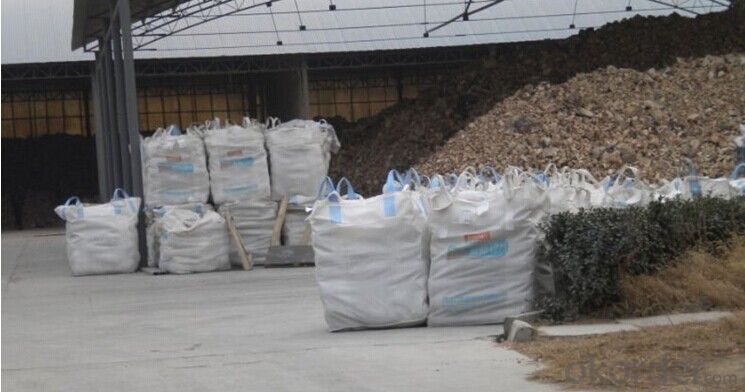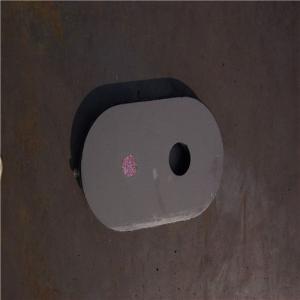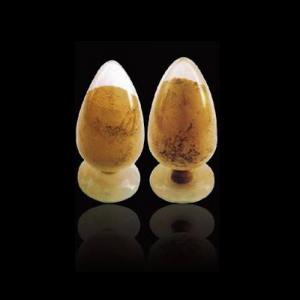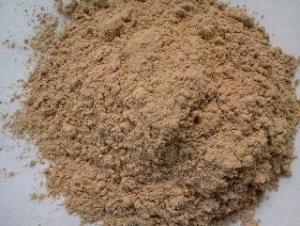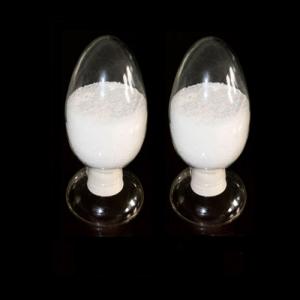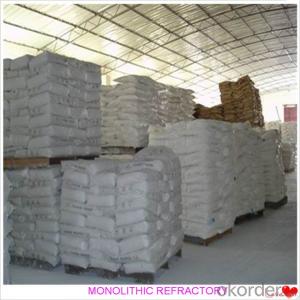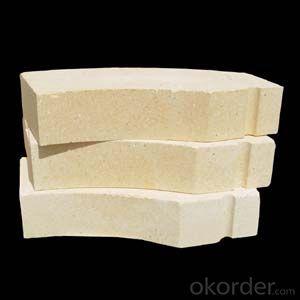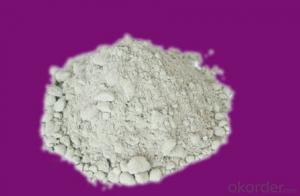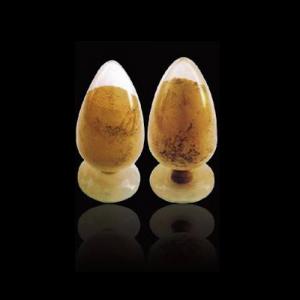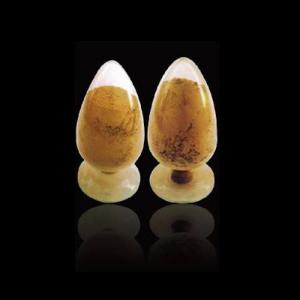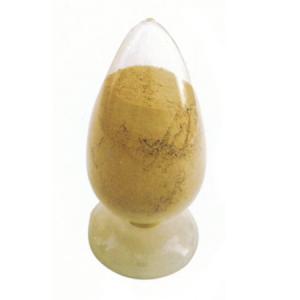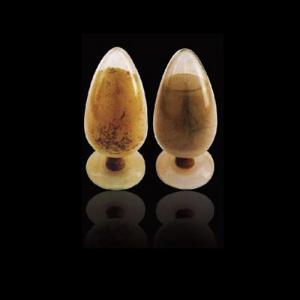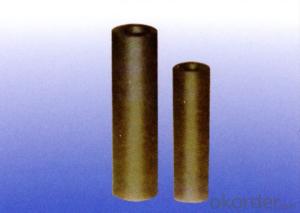Monolithic High Alumina Mortar Refractory for Iron and Steel Industry
- Loading Port:
- Qingdao
- Payment Terms:
- TT OR LC
- Min Order Qty:
- 500 m.t.
- Supply Capability:
- 10000 m.t./month
OKorder Service Pledge
OKorder Financial Service
You Might Also Like
Specifications
high alumina mortar steel plant refractory manufacturers
1. Convenient installation
2. Anti-corrosion
3 ISO Approved
high alumina mortar steel plant refractory manufacturers
convenient installation, anti-corrosion, long service life
excellent disintegration performance, easy separation and purifying function
Refractory Mortar belongs to air hardening refractory mortar, are supplied as ready-to-use wet blends of finely-ground aggregates and special binders.
2. The mortar develop good strength on air drying, forming strong joints and conferring an almost monolithic structure to the brickwork
3. Supply status: Wet state or dry state, generally supplied With the barrel if it’s wet, and the dry mortar can be supplied according to customers’ requirements
Refractory Mortar Features
1. High adhesive strength.
2. Thermal expansion coefficient is low.
3. Heating linear change small.
4. Granularity standard.
5. Construction performance is strong.pP
Typical Application
1. for laying insulting firebricks, super-duty and high alumina dense refractory bricks
2. provide resistance to infiltration of air or hot gases
3. retard penetration of slag and molten metal into the joints
- Q: How do monolithic refractories withstand the chemical attacks in copper smelting applications?
- Monolithic refractories are able to withstand chemical attacks in copper smelting applications due to their unique composition and properties. These refractories are typically made from high-purity materials such as alumina, silica, or magnesia, which have excellent resistance to chemical reactions. Additionally, they are designed to have low porosity and high density, minimizing the penetration of corrosive substances into the refractory material. The monolithic nature of these refractories also eliminates joints and seams, reducing the chances of chemical attack. Overall, the combination of the refractory's composition, low porosity, and monolithic structure enables them to withstand the harsh chemical environment of copper smelting applications.
- Q: How do monolithic refractories improve the efficiency of reheating furnaces in steel plants?
- Monolithic refractories play a crucial role in improving the efficiency of reheating furnaces in steel plants. These refractories are specially designed to withstand high temperatures and harsh operating conditions, making them ideal for use in steel plants. One of the key ways in which monolithic refractories enhance furnace efficiency is by reducing heat loss. These refractories have excellent insulation properties, which help to minimize heat transfer from the furnace to its surroundings. As a result, less energy is wasted, and the furnace can maintain its desired temperature more efficiently. Additionally, monolithic refractories contribute to a more uniform and controlled heat distribution within the furnace. They can be easily shaped and installed to create a seamless lining, ensuring that heat is evenly distributed throughout the furnace chamber. This uniform heat distribution prevents hotspots and cold spots, leading to a more efficient heating process. Monolithic refractories also play a crucial role in minimizing downtime and maintenance requirements. Unlike traditional brick linings, which are prone to cracking and erosion, monolithic refractories offer superior resistance to wear and tear. This enhanced durability reduces the need for frequent repairs and replacements, allowing for uninterrupted furnace operation and increased overall efficiency. Furthermore, monolithic refractories contribute to improved energy efficiency by reducing fuel consumption. The superior insulation properties of these refractories help to retain heat within the furnace, reducing the amount of energy required to maintain the desired temperature. This leads to significant energy savings for steel plants, as less fuel is needed to achieve the same heating results. In conclusion, monolithic refractories significantly improve the efficiency of reheating furnaces in steel plants by reducing heat loss, ensuring uniform heat distribution, minimizing downtime and maintenance, and reducing fuel consumption. By incorporating these refractories into their furnace linings, steel plants can enhance their productivity, reduce energy costs, and improve the overall efficiency of their operations.
- Q: How do monolithic refractories impact the overall productivity of iron and steel operations?
- Monolithic refractories have a significant impact on the overall productivity of iron and steel operations. These refractories are used to line the furnaces, ladles, and other high-temperature equipment, providing insulation and protection against extreme heat, chemical reactions, and mechanical wear. By ensuring the integrity and durability of these critical components, monolithic refractories enhance the efficiency and longevity of iron and steel production processes. They minimize downtime caused by frequent repairs or replacements, improve thermal management, and optimize energy consumption. Ultimately, the use of monolithic refractories leads to increased productivity, reduced costs, and improved quality control in iron and steel operations.
- Q: How do monolithic refractories contribute to the reduction of heat loss in iron and steel furnaces?
- Monolithic refractories play a crucial role in reducing heat loss in iron and steel furnaces by providing excellent insulation and maintaining a high level of thermal efficiency. These materials are designed to withstand extreme temperatures and are applied as a single, seamless lining, eliminating joints and gaps that could allow heat to escape. By creating a barrier between the hot furnace and the surrounding environment, monolithic refractories effectively minimize heat loss, ensuring optimal energy utilization and cost savings in the iron and steel industry.
- Q: What are the advancements in monolithic refractory technology for the iron and steel industry?
- In recent years, significant progress has been made in the field of monolithic refractory technology for the iron and steel industry. Monolithic refractories, which are heat-resistant materials used to line the walls and floors of high-temperature industrial processes, have seen notable advancements. One of the key breakthroughs in monolithic refractory technology is the development of new and improved materials. Traditional refractory materials like firebricks have been replaced by more advanced options such as castables and gunning mixes. These upgraded materials offer superior performance in terms of thermal conductivity, thermal shock resistance, and erosion resistance. They can endure higher temperatures and can be applied more efficiently, resulting in enhanced process efficiency and reduced maintenance downtime. Another significant advancement is the utilization of advanced additives in monolithic refractories. These additives have the ability to enhance the properties of the refractory material, such as increasing its resistance to corrosion and erosion. They also improve the bond between the refractory and the substrate, ensuring a longer lifespan for the lining. Furthermore, the progress in monolithic refractory technology has led to the development of innovative installation techniques. Shotcreting, for example, has gained popularity due to its efficiency and ability to provide a uniform lining by spraying the refractory material onto the surface. Similarly, the use of gunning machines, which pump the refractory material at high velocity, has improved the speed and accuracy of installation. Moreover, there have been advancements in the design of monolithic refractories tailored specifically for various applications in the iron and steel industry. Refractories for blast furnaces, ladles, tundishes, and other critical equipment have been optimized to withstand the unique challenges and harsh conditions of these processes. The development of specialized monolithic refractories has resulted in increased productivity, reduced energy consumption, and improved product quality in the iron and steel industry. In conclusion, advancements in monolithic refractory technology for the iron and steel industry have brought about improved materials, advanced additives, innovative installation techniques, and specialized designs. These advancements have significantly enhanced the performance, durability, and efficiency of refractory linings in high-temperature industrial processes. Consequently, the iron and steel industry can benefit from increased productivity, reduced downtime, and improved product quality.
- Q: How do monolithic refractories contribute to the safety of iron and steel operations?
- Monolithic refractories play a crucial role in ensuring the safety of iron and steel operations. They provide excellent thermal insulation and resistance to high temperatures, preventing heat transfer to the environment and minimizing the risk of accidents or fires. Additionally, these refractories possess high mechanical strength and chemical resistance, protecting the structural integrity of furnaces and other equipment under extreme conditions. By effectively containing heat and maintaining the stability of the production process, monolithic refractories enhance the overall safety and reliability of iron and steel operations.
- Q: Can monolithic refractories be used for the lining of blast furnace runners and troughs?
- Yes, blast furnace runners and troughs can have their lining done with monolithic refractories. Monolithic refractories, unlike traditional refractory bricks that are made by assembling individual units, are composed of a single, homogeneous structure. There are several advantages to using monolithic refractories for lining blast furnace runners and troughs. Firstly, they exhibit excellent thermal shock resistance, which is vital in this application given the extreme temperature fluctuations the lining is exposed to. Additionally, monolithic refractories have a good resistance to chemical attack from the molten metal and slag, which helps prolong the lining's lifespan in the harsh working environment of blast furnaces. Moreover, monolithic refractories can be easily installed in intricate shapes and structures, allowing for greater flexibility in designing the lining of blast furnace runners and troughs. This ease of installation also results in reduced downtime during maintenance and repair, as monolithic refractories can be applied quickly and efficiently. To summarize, monolithic refractories are a suitable option for lining blast furnace runners and troughs due to their thermal shock resistance, chemical resistance, and easy installation. Their use can contribute to improving the longevity and performance of these critical components in blast furnace operations.
- Q: What are some common maintenance practices for monolithic refractories in iron and steel furnaces?
- There are several common maintenance practices for monolithic refractories in iron and steel furnaces: 1. It is essential to conduct regular inspections. Trained professionals should inspect the refractories to identify any potential issues, such as wear, erosion, or damage. 2. Promptly repairing and patching damaged or eroded areas is crucial to maintain the integrity of the refractories. Refractory mortars or castable refractories can be used for this purpose. 3. Regularly cleaning the refractory lining is important to remove any build-up of impurities that can affect performance. Mechanical cleaning with brushes or scrapers, as well as chemical cleaning with acids, can be employed. 4. Controlled thermal cycling is often performed to condition and strengthen the refractories. Gradually increasing and decreasing the furnace temperature improves their resistance to thermal shock. 5. Applying protective coatings or sealants to the refractory lining enhances its resistance to chemical attack, erosion, and thermal cycling. These act as barriers against molten metals or slags. 6. Monitoring and controlling operating conditions inside the furnace, such as temperature, pressure, and atmosphere, is crucial. This helps prevent sudden changes that may negatively affect the refractories. 7. Regular training and education for furnace operators and maintenance personnel are crucial. This ensures they understand the importance of proper refractory maintenance, reducing the risk of premature failure. Implementing these maintenance practices significantly prolongs the lifespan of monolithic refractories in iron and steel furnaces. It maximizes their performance, leading to improved efficiency and cost-effectiveness in the production process.
- Q: How do monolithic refractories contribute to the overall efficiency of ladle cleaning operations?
- Enhancing the overall efficiency of ladle cleaning operations is a crucial role played by monolithic refractories. Composed of a single, homogeneous structure, these refractory materials offer several key advantages that contribute to improved efficiency. To begin with, monolithic refractories possess exceptional thermal insulation properties. This means they can withstand high temperatures without cracking or deteriorating, thereby allowing for more efficient and effective ladle cleaning operations. By consistently maintaining a specific temperature, these refractories minimize heat loss and ensure uninterrupted and timely completion of the cleaning process. Furthermore, monolithic refractories exhibit high resistance to chemical attacks. In steelmaking processes, ladles often come into contact with aggressive molten metals and slag that can erode and corrode the refractory lining. However, monolithic refractories are designed specifically to endure these harsh conditions, providing a longer service life and reducing the need for frequent repairs or replacements. This not only saves time but also reduces the overall cost of ladle maintenance. In addition, monolithic refractories possess excellent flowability and workability. They can be easily shaped and installed in the ladle lining, enabling quick and precise application. This ease of installation results in shorter downtime during ladle cleaning operations, as the refractory lining can be swiftly repaired or replaced. Moreover, the flowability of monolithic refractories ensures better coverage and adherence to the ladle's surface, leaving no gaps or weak points. This enhances the overall effectiveness of the cleaning process and prevents potential contamination or reactivity issues. In conclusion, monolithic refractories significantly contribute to the overall efficiency of ladle cleaning operations by providing exceptional thermal insulation, high resistance to chemical attacks, and easy workability. These properties lead to reduced downtime, increased durability, and cost savings, making monolithic refractories a vital component in optimizing ladle cleaning processes.
- Q: What are the factors affecting the lifespan of monolithic refractories?
- There are several factors that can significantly affect the lifespan of monolithic refractories. 1. Temperature: One of the most critical factors is the operating temperature. Monolithic refractories are designed to withstand high temperatures, but prolonged exposure to extreme temperatures can cause thermal shock and lead to premature failure. 2. Thermal cycling: Frequent temperature fluctuations, known as thermal cycling, can also shorten the lifespan of monolithic refractories. The expansion and contraction of the refractory material can create stress, resulting in cracking and degradation over time. 3. Chemical environment: The chemical environment in which the monolithic refractories are used plays a crucial role in their lifespan. Exposure to corrosive gases, acids, alkalis, or molten metals can cause chemical reactions that degrade the refractory material. 4. Mechanical stress: Mechanical stress, such as abrasion, impact, and vibration, can weaken monolithic refractories and shorten their lifespan. This is especially relevant in industries with high mechanical activity, such as steelmaking or cement production. 5. Installation and maintenance: Proper installation and regular maintenance are essential for maximizing the lifespan of monolithic refractories. Poor installation techniques or neglecting maintenance can result in weak joints, inadequate anchoring, or the growth of cracks, leading to premature failure. 6. Quality of refractory material: The quality and composition of the monolithic refractory material can significantly impact its lifespan. Higher-quality materials with better resistance to temperature, chemical attacks, and mechanical stress tend to have longer lifespans. 7. Design and engineering: The design of the refractory lining and its engineering considerations, such as thickness, shape, and reinforcement, also influence the lifespan of monolithic refractories. Proper design can distribute stress more evenly, reduce thermal gradients, and improve overall performance and durability. 8. Operating conditions: The way monolithic refractories are operated and handled can affect their lifespan. Factors such as rapid temperature changes, improper cooling or heating procedures, or excessive thermal cycling can all contribute to premature failure. In summary, the lifespan of monolithic refractories is influenced by various factors, including temperature, thermal cycling, chemical environment, mechanical stress, installation and maintenance practices, quality of refractory material, design and engineering considerations, and operating conditions. Proper consideration and management of these factors are essential for maximizing the lifespan of monolithic refractories.
Send your message to us
Monolithic High Alumina Mortar Refractory for Iron and Steel Industry
- Loading Port:
- Qingdao
- Payment Terms:
- TT OR LC
- Min Order Qty:
- 500 m.t.
- Supply Capability:
- 10000 m.t./month
OKorder Service Pledge
OKorder Financial Service
Similar products
Hot products
Hot Searches
Related keywords
